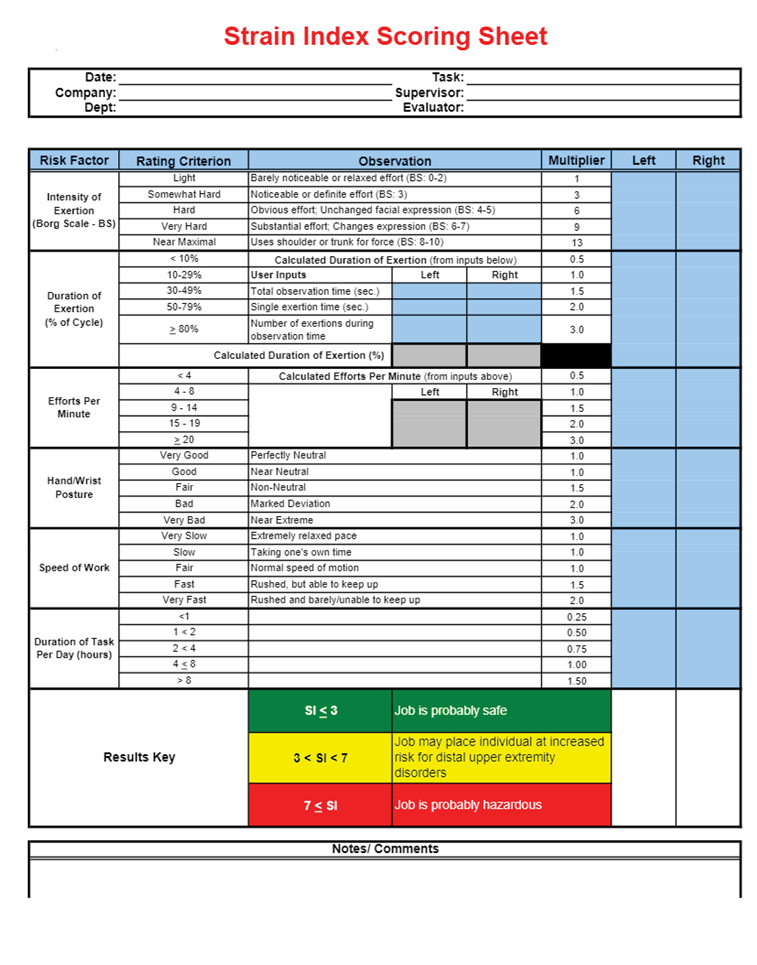Using The Strain Index
The Strain Index is a tool used when you need to calculate the risk of developing a musculoskeletal disorder (MSD) in hand intensive work. Repeated tasks with the hands can lead to levels of discomfort in the hands, wrists, and elbows.
The Strain Index (SI) was proposed by Moore and Garg (1995) as a means to assess jobs for risk of work-related musculoskeletal disorders (WMSDs) of the distal upper extremities (hand, wrist, elbow). It was developed using existing knowledge of biomechanics, physiology, and epidemiology and is used to assess a job, not a person. The calculation is based on 6 task variables:
• Intensity of exertion
• Duration of exertion
• Efforts per minute
• Hand/wrist posture
• Speed of work
• Duration of task per day
Each variable is assigned a rating and then a corresponding multiplier. All the multipliers are inputted into the SI Equation to produce a single score that ranges from 0.0625-1053. The resulting score corresponds to these results:
- ≤ 3 Job is probably safe
- >3 and ≤ 7 Job may place individual at increased risk for distal upper extremity disorders
- > 7 Job is probably hazardous
Before using the SI, consider the following limitations:
- Predicts risk of injury, but not a particular disorder
- Can be completed using qualitative estimates for 3 of 6 variables
- Multiple task analysis is not covered consisting of a variety of tasks such as a Maintenance employee
- Discriminating between ‘light’ vs. ‘somewhat hard’ for intensity of exertion appears to be critical
Please contact us if you’d like to learn more about The Strain Index and it’s effective use as a risk assessment tool in the workplace.


